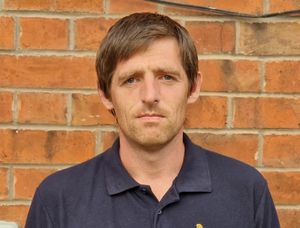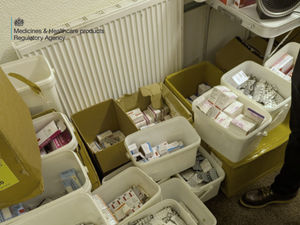Call for rethink over controversial scheme to reduce crew members onboard fire engines
A leading fire service official is calling for a rethink over a controversial scheme to reduce the number of crew members onboard fire engines.

Following changes introduced by the Police and Fire Crime Commissioner to reduce the number of crew from four to three for on-call firefighters.
Martin Starkey is the regional chair and the Brigade Secretary for the Fire Brigades Union in Staffordshire. He has been highlighting the pressures that on-call firefighters will have following the changes.
Martin says: “In the time I’ve joined the fire service I’ve seen our on-call availability get worse and our ability to resource incidents deteriorate over that time.
“Really the PFCC’s job is to make sure we have a properly resourced fire service and I think he’s failing in that if I’m honest.”
On-call firefighters often call retained crew are often based in rural areas and respond to incidents in their local area. They are seen as cost effective as they are only paid for the hours why they are on duty
One of the issues this helps to address is response times, the ONS reports that Staffordshire are the fifth lowest in terms of response times and on average it takes 11 minutes to respond to a primary dwelling fire.
Martin continues:”I think one of the reasons for that is because of our lack of on-call availability. This means our whole time appliances are having to travel further to get to incidents as they are covering larger areas to make up for the shortfall..
“What this does is if we can get a truck available with three people and count it as available it will get to the incident and stop the clock but they can’t necessarily do the things that they would have been able to do with more crew.”
Since 2010 there has been a reduction in both whole time and on-call firefighters, in 2010 there were 461 whole time and 444 on-call firefighters, in 2022 that number has fallen to 312 whole time and 325 on-call staff.
One of the issues Martin highlights is the moral pressure that crew members will be under, as the retained crew are often based in rural areas they are more likely to know the person who might need help.
Martin explains: “If I show up and I don’t go into house fires, members of the public will ask us why you aren’t going in and stopping the house burning down and that moral pressure starts being applied, but that pressure doesn’t just come from the public, it comes from ourselves as well.
“I don’t do this job to not go into the fire and deal with it, that is the situation we are putting these crews in, a moral dilemma of do I break the rules imposed on us by the fire service or do I obey those rules and wait for the next appliance. House fires are just an example of this moral pressure that exists at any incident that involves people, property or animals.
“He also talks about those crews of three attending incidents in support of fully crewed appliances, in most cases these appliances with three riders will be arriving at an incident first due to how many rural areas we have in Staffordshire, so our fully crewed appliances will be arriving to support our lesser crewed appliances.”
Currently, Staffordshire Fire Service is behind the national average for funding by £5.69 per person in Staffordshire which equates to a funding shortfall of about £6.4 Million per year.
Questions have been raised over what the PFCC is doing over this funding gap and whether the politics of trying to get reelected will mean that the council tax precept, which pays for the fire service, will remain low with the funding shortfall increasing.
Staffordshire Commissioner for Police, Fire & Rescue and Crime, Ben Adams has again defended the change
The Commissioner said: “I will always aim to keep council tax as low as possible and am very aware of the pressures on household budgets.
“After public consultation, I set an increase of 4.85% for Fire & Rescue this year (an extra £3.90 per year for a band D property), which was lower than the limits set by government and below headline inflation rates.
“Even so, this was the highest increase in precept for the last 15 years and a significant contribution by local taxpayers, reflecting the requests made by the Fire & Rescue Service balanced with the needs of the public.
“As Commissioner, I hold the Chief Fire Officer to account via public performance meetings where all areas of the service are scrutinised in detail. The availability of response resources is a key topic in these discussions.
“A three-rider pilot is underway in Staffordshire – in line with a number of other Fire & Rescue Services – which will see more opportunities for on-call fire fighters to mobilise in specific situations such as bin fires, or to larger incidents in support of full crews.
“If they are first on the scene at larger incidents, there are actions they can safely take while awaiting another crew, such as setting up equipment, providing first aid or preventing further deterioration of the incident. The nature of any engagement would always take account of risk, for which they are professionally trained.
“Staffordshire’s on-call fire fighters are fully engaged in reviewing this pilot which, if successful, will increase the number of incidents they can attend, therefore improving the safety of their colleagues and the public. I also expect it to improve the retention of the on-call fire fighters themselves, who join to make a difference in their communities and want to be actively using their skills.
“His Majesty’s Inspectors have expectations of public service productivity, and the public also expect a rapid response to emergencies from their Fire & Rescue Service. Our ambition is that teams of four and five can be supported by on-call colleagues in teams of three more frequently, improving the service for Staffordshire residents and businesses.



